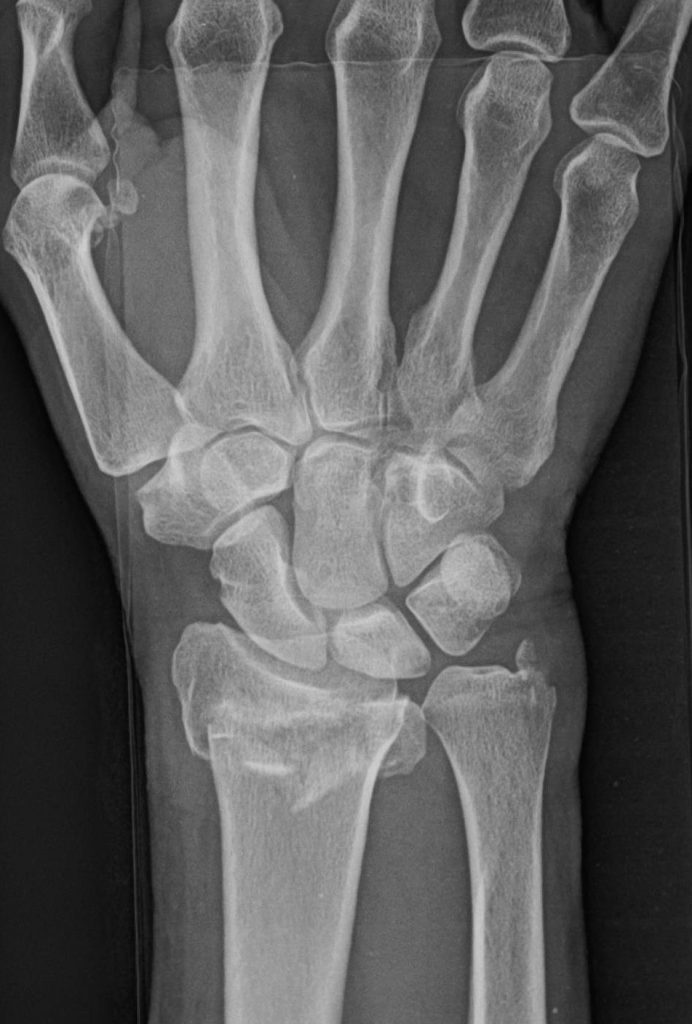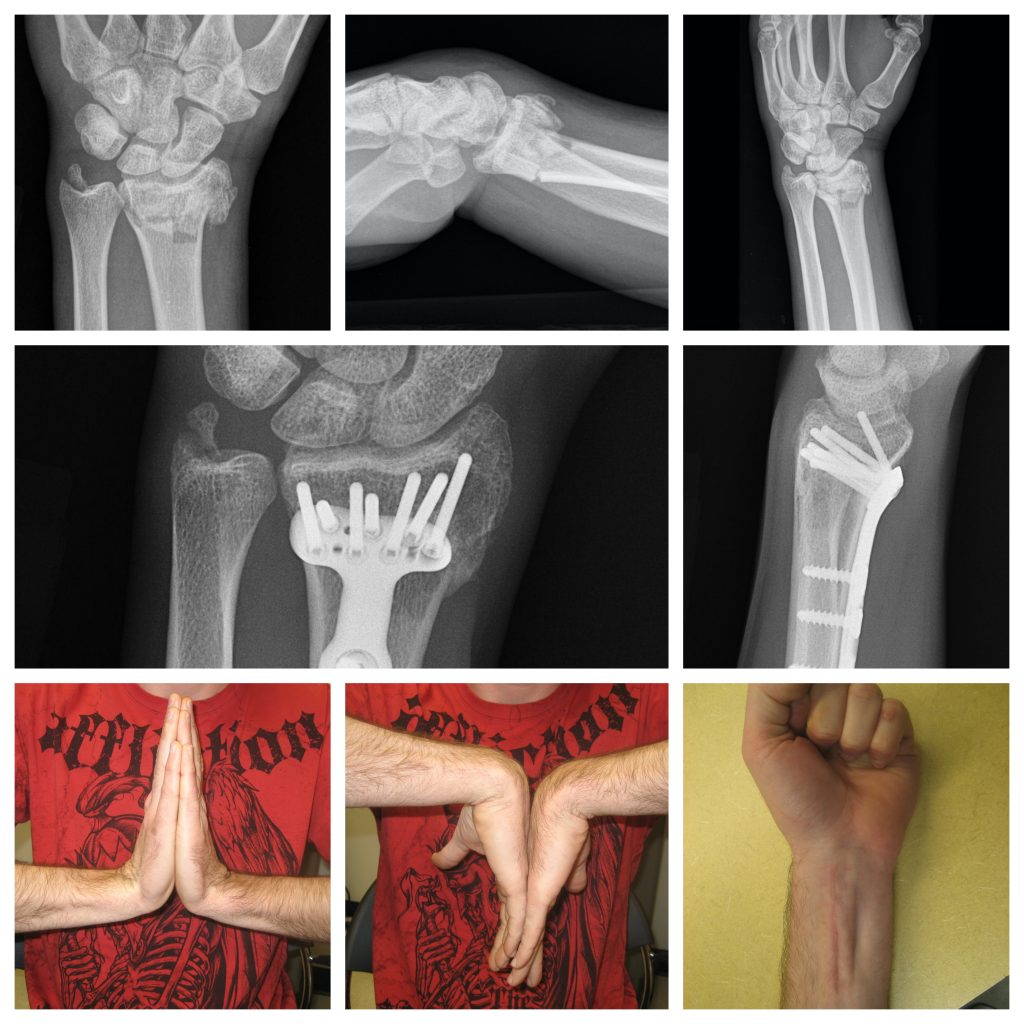If you recently hurt your wrist and the emergency room or urgent care practitioner told you that you broke a bone in your wrist, I am sure that you have a lot of questions. While you are waiting for your follow-up appointment with an orthopedic surgeon, you may be wondering several things including: do I need surgery, how long will this take to heal, and will my hand ever be the same? Read more to learn about broken wrist treatment in Raleigh from a hand doctor.
The most common bone to break (or fracture) in the wrist is at the end of the radius bone, called the “distal radius.” There is an area within the bone which is naturally weaker than the surrounding structures, making it more likely to fracture. These fractures often occur in women after menopause, especially in patients with osteoporosis. This can also occur during a sports injury, fall off a ladder, or a car wreck. Other possible wrist injuries include scaphoid fractures, carpal dislocations, and scapholunate ligament tears.
Nonoperative care for broken wrist
Orthopedic surgeons frequently treat patients with a distal radius fracture. If the fracture is in good alignment, patients can be treated without surgery. Patients are typically treated in a fiberglass cast for about 6 weeks to protect the wrist while healing. Follow-up x-rays are commonly obtained during treatment to monitor the bone healing and alignment. If the wrist is stiff after the cast comes off, hand therapy exercises can be performed to help improve the range of motion. Most patients regain range of motion, strength, and function gradually over the next 2-3 months. It may take some patients up to a year to fully recover their grip strength and flexibility.
Surgeons use several factors to determine the recommended treatment. Things that I consider are the patient’s activities, health status, and the type of fracture seen on x-rays. I don’t think that a patient’s age is as important as their health and physical activity. For example, I have seen tennis-playing 80 year-old patients who are more physically active and healthy than some 40 year-old patients. On the other hand, significant medical problems at any age can make surgery a higher risk for a particular patient.
I also assess the fracture pattern carefully. Patients who have fractures which are stable and well-aligned on the x-rays are best treated conservatively without surgery. If the fractured pieces are out of place, broken into many pieces, or involve the joint surface, the fracture is considered more unstable. In some cases, the bones can be manipulated, or “set,” and realigned with a splint or cast. However, some unstable fractures can shift out of place, even when immobilized in a splint or cast. The distal radius fracture image below demonstrates comminution, intra-articular fracture displacement, and an ulnar styloid fracture.

Surgery for Broken Wrist
If the alignment cannot be corrected well with manipulation alone, and the patient has reasonable baseline health, surgery is often recommended. Many surgeons now use internal plates and screws in surgery to maintain the position of the bones during the healing process. These implants are low-profile and specifically designed to fit the shape of the distal radius bone. After surgery, the wrist is placed into a splint and sutures are removed about 2 weeks later. Elevation of the hand to reduce swelling is recommended and movement of the fingers is encouraged right away to reduce stiffness. Most patients are allowed to use the hand for light activities as soon as the pain allows. Hand therapy can be helpful to patients to regain finger and wrist range of motion, grip strength and hand function. The bone takes about 6 weeks to heal after surgery. Range of motion and grip strength gradually improve over the next 2-3 months. It can take up to a year for some patients to fully recover.

The orthopedic surgeon should discuss the available treatment options, the risks and benefits of each option, and the patient should be welcomed to ask questions. I think that the patient needs to be involved in the decision making process in order to make the best treatment decisions possible.
Follow up care for broken wrist
After leaving the emergency room or urgent care, patients are able to follow-up with the orthopedic doctor of their choice. Many patients choose the doctors at Raleigh Hand to Shoulder Center for their specialization in hand and wrist injuries, personalized patient care, and on-site hand therapy.
